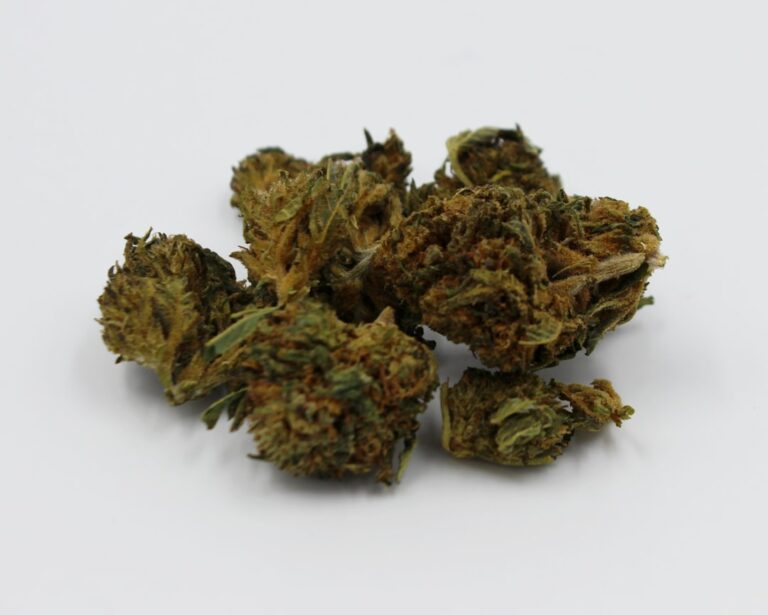Compression fittings are a type of plumbing or piping connection that utilizes a compression ring, also known as a ferrule, to create a watertight seal between the fitting and the pipe. These fittings are commonly used in applications where a secure and leak-free connection is essential, such as in plumbing, heating, and cooling systems. The compression fitting consists of three main components: the compression nut, the compression ring, and the body of the fitting. The compression nut is tightened onto the body of the fitting, which compresses the compression ring around the pipe, creating a tight seal.
Compression fittings are available in a variety of materials, including brass, stainless steel, and plastic, making them suitable for use with different types of pipes and tubing. They are also available in various sizes to accommodate different pipe diameters. Compression fittings are known for their ease of installation and versatility, as they can be used with both rigid and flexible piping materials. They are also reusable, making them a cost-effective option for many applications. Overall, compression fittings are a reliable and efficient choice for creating secure connections in plumbing and piping systems.
Key Takeaways
- Compression fittings create a tight seal by compressing a soft metal or plastic ring between the fitting and the pipe.
- When choosing compression fittings, consider the material, size, and pressure rating to ensure compatibility with your application.
- Proper installation of compression fittings involves deburring the pipe, ensuring a clean cut, and using the correct tools for tightening.
- Regular maintenance and inspection of compression fittings is essential to prevent leaks and ensure optimal performance.
- Common issues with compression fittings include overtightening, improper alignment, and damaged sealing rings. Regular inspection and maintenance can help prevent these issues.
Choosing the Right Compression Fittings for Your Application
When selecting compression fittings for a specific application, it is important to consider several factors to ensure the proper fit and functionality. The first consideration is the material of the fitting and the pipe or tubing it will be used with. Brass compression fittings are commonly used for copper pipes, while stainless steel fittings are suitable for use with stainless steel tubing. Plastic compression fittings are often used with plastic pipes such as PVC or CPVIt is crucial to match the material of the fitting with the material of the pipe to ensure compatibility and prevent corrosion or leaks.
Another important factor to consider when choosing compression fittings is the size and type of the pipe or tubing. Compression fittings are available in various sizes to accommodate different pipe diameters, so it is essential to select the correct size for a secure and leak-free connection. Additionally, there are different types of compression fittings designed for specific applications, such as straight couplings, elbows, tees, and adapters. Choosing the right type of fitting for the specific layout and requirements of the plumbing or piping system is crucial for optimal performance and longevity.
Proper Installation Techniques for Compression Fittings
Proper installation of compression fittings is essential to ensure a secure and leak-free connection. The first step in installing a compression fitting is to cut the pipe or tubing to the desired length using a pipe cutter or tubing cutter. It is important to ensure that the cut is clean and square to ensure a proper seal. Once the pipe is cut to size, the next step is to slide the compression nut and compression ring onto the pipe, followed by inserting the pipe into the body of the fitting. The compression nut is then tightened onto the body of the fitting using a wrench, which compresses the compression ring around the pipe, creating a tight seal.
It is crucial to avoid over-tightening the compression nut, as this can damage the fitting or cause leaks. A general rule of thumb is to tighten the nut by hand until it is snug, and then use a wrench to turn it an additional quarter turn to secure the connection. It is also important to ensure that the pipe is fully inserted into the body of the fitting before tightening the nut to prevent leaks. Once the compression fitting is installed, it is recommended to perform a pressure test to check for any leaks or weak points in the connection. Following proper installation techniques is essential for ensuring the reliability and longevity of compression fittings in plumbing and piping systems.
Maintaining and Inspecting Compression Fittings
| Compression Fitting | Maintenance | Inspection |
|---|---|---|
| Leakage | Regularly check for leaks and tighten if necessary | Inspect for any signs of leakage or corrosion |
| Tightness | Ensure fittings are properly tightened | Check for any loose fittings |
| Corrosion | Keep fittings clean and free from corrosion | Inspect for any signs of corrosion and address immediately |
Regular maintenance and inspection of compression fittings are essential for ensuring their continued performance and reliability in plumbing and piping systems. One important aspect of maintenance is checking for any signs of corrosion or wear on the fittings, as this can indicate potential weak points or leaks in the connection. It is also important to inspect the compression nut and compression ring for any damage or deformation that could affect their ability to create a tight seal around the pipe.
In addition to visual inspections, it is recommended to perform periodic pressure tests on compression fittings to check for any leaks or weaknesses in the connection. This can be done using a pressure testing kit to pressurize the system and monitor for any drops in pressure that could indicate a leak. If any issues are identified during maintenance or inspection, it is important to address them promptly by replacing any damaged components or re-installing the fitting as needed. By maintaining and inspecting compression fittings regularly, potential issues can be identified and addressed before they lead to costly leaks or system failures.
Troubleshooting Common Issues with Compression Fittings
Despite their reliability, compression fittings can experience common issues that may affect their performance and integrity in plumbing and piping systems. One common issue is leaks, which can occur if the compression nut is not tightened sufficiently or if there is damage to the compression ring or pipe. To troubleshoot leaks, it is important to first check that the compression nut is tightened properly and that the pipe is fully inserted into the body of the fitting. If leaks persist, it may be necessary to replace the compression ring or inspect the pipe for any damage that could be causing the leak.
Another common issue with compression fittings is overtightening, which can cause damage to the fitting or pipe and lead to leaks. To troubleshoot overtightening, it is important to ensure that the compression nut is tightened by hand until snug, and then turned an additional quarter turn using a wrench to secure the connection. If there are signs of damage or deformation on the fitting or pipe due to overtightening, it may be necessary to replace these components to prevent further issues.
Advantages and Limitations of Compression Fittings

Compression fittings offer several advantages that make them a popular choice for plumbing and piping connections. One of the main advantages is their ease of installation, as they do not require any special tools or soldering equipment, making them suitable for DIY projects and quick repairs. Additionally, compression fittings are reusable, allowing for easy disassembly and reassembly without needing new components. They also provide a secure and leak-free connection when installed properly, making them a reliable choice for various applications.
However, compression fittings also have limitations that should be considered when selecting them for a specific application. One limitation is their susceptibility to overtightening, which can cause damage to the fitting or pipe and lead to leaks. It is important to follow proper installation techniques and avoid over-tightening to prevent this issue. Another limitation is their compatibility with certain types of pipes and tubing materials, as not all materials are suitable for use with compression fittings. It is important to ensure that the material of the fitting matches that of the pipe or tubing to prevent corrosion or leaks.
Tips for Maximizing Efficiency with Compression Fittings
To maximize efficiency with compression fittings in plumbing and piping systems, there are several tips that can be followed to ensure optimal performance and longevity. One tip is to use high-quality compression fittings from reputable manufacturers to ensure reliability and durability. It is also important to select the correct size and type of fitting for a specific application to ensure a proper fit and functionality.
Another tip for maximizing efficiency with compression fittings is to follow proper installation techniques, including cutting pipes or tubing cleanly and squarely, ensuring proper insertion into the body of the fitting, and avoiding over-tightening of the compression nut. Regular maintenance and inspection of compression fittings are also essential for identifying any potential issues early on and addressing them promptly to prevent leaks or system failures.
In conclusion, compression fittings are a versatile and reliable choice for creating secure connections in plumbing and piping systems. By understanding their components and functionality, choosing the right fittings for specific applications, following proper installation techniques, maintaining and inspecting them regularly, troubleshooting common issues, understanding their advantages and limitations, and following tips for maximizing efficiency, compression fittings can provide long-lasting performance and reliability in various plumbing and piping applications.
If you’re interested in learning more about compression fittings, you should check out this article on Mamais Guitars. They provide a comprehensive guide to compression fittings and how they are used in the guitar industry. It’s a great resource for anyone looking to understand the importance and functionality of compression fittings in various applications.
FAQs
What is a compression fitting?
A compression fitting is a type of plumbing connection that uses a compression nut and ring to secure a pipe or tubing to a fitting.
How does a compression fitting work?
A compression fitting works by using a compression nut and ring to squeeze the pipe or tubing against the fitting, creating a watertight seal.
What are compression fittings used for?
Compression fittings are commonly used in plumbing and heating systems to connect pipes and tubing, particularly in situations where soldering or welding is not practical.
What types of materials can compression fittings be used with?
Compression fittings can be used with a variety of materials, including copper, brass, aluminum, and plastic pipes and tubing.
Are compression fittings reusable?
Compression fittings can be reused, but it is important to inspect the compression ring and nut for any signs of wear or damage before reusing them.
What are the advantages of using compression fittings?
Compression fittings are easy to install, require no special tools, and can be used in tight spaces. They also provide a reliable and leak-free connection when properly installed.
What are the disadvantages of using compression fittings?
Compression fittings can be more expensive than other types of fittings, and they may not be suitable for high-pressure or high-temperature applications. Additionally, over-tightening a compression fitting can cause damage to the pipe or tubing.















+ There are no comments
Add yours